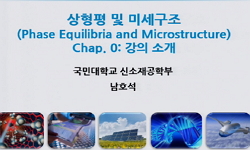목 적: Ⅱ-Ⅲ2-Ⅵ4형 반도체 가운데 고용체 화합물에 대한 연구의 하나로 Ⅵ족인 S, Se를 상호 교환하여 성장시킨 ZnAl2Se3.6S0.4 고용체의 구조 및 광 발광 메카니즘을 규명하였고, 이로부터 광학...
http://chineseinput.net/에서 pinyin(병음)방식으로 중국어를 변환할 수 있습니다.
변환된 중국어를 복사하여 사용하시면 됩니다.
- 中文 을 입력하시려면 zhongwen을 입력하시고 space를누르시면됩니다.
- 北京 을 입력하시려면 beijing을 입력하시고 space를 누르시면 됩니다.

The properties of Thermodynamic Functions and Photoluminescence in ZnAl2Se3.6S0.4 Single Crystal
한글로보기https://www.riss.kr/link?id=A102531613
- 저자
- 발행기관
- 학술지명
- 권호사항
-
발행연도
2016
-
작성언어
Korean
-
주제어
고용체 화합물 ; 주개준위 ; 받개준위 ; entropy ; SCV ; heat capacity ; CCV ; enthalpy ; HCV ; Solid solution ; donor level ; acceptor level ; Entropy ; SCV ; Heat capacity ; CCV ; Enthalpy ; HCV
-
등재정보
KCI등재
-
자료형태
학술저널
-
수록면
447-454(8쪽)
- 제공처
-
0
상세조회 -
0
다운로드
부가정보
국문 초록 (Abstract)
목 적: Ⅱ-Ⅲ2-Ⅵ4형 반도체 가운데 고용체 화합물에 대한 연구의 하나로 Ⅵ족인 S, Se를 상호 교환하여 성장시킨 ZnAl2Se3.6S0.4 고용체의 구조 및 광 발광 메카니즘을 규명하였고, 이로부터 광학적 energy band gap의 온도의존성과 기초적 열역학 함수를 추정고자 한다.
방 법: ZnAl2Se3.6S0.4 단결정은 수송매체로서 iodine을 이용한 화학수송법(CTR)으로 단결정을 성장시켰 다. 단결정을 성장시키기 위하여 시료 출발측을 950 ℃, 성장측을 850 ℃로 하여 7일간 성장시켰다. 기초 흡 수단 부근에서 에너지 띠 간격의 온도의존성을 구하기 위하여 저온장치가 부착된 UV-VIS-NIR spectrophotometer를 사용하여 광흡수 스펙트럼을 측정하였다. 광발광 특성은 광흡수 특성 측정에 사용하 였던 측정용 시편을 cryogenic system 의 cold finger 에 부착시키고, 여기 광원으로 325 ㎚의 He-Cd laser 를 사용하였으며, double-grating monochromator, data-mate control system, cryogenic system, PM tube 등으로 구성된 측정 system을 사용하여 측정하였다.
결과 및 고찰: ZnAl2Se3.6S0.4 단결정의 에너지 띠 간격과 온도의존성을 구하기 위하여 이들 단결정의 기 초 흡수단 영역인 320 ~ 420㎚ 파장영역과 13K ~ 289K 온도영역에서 광흡수 스펙트럼을 측정하였다. Varshni가 제안한 에너지 띠 간격의 온도의존성 특성에 대한 실험식에 잘 일치하였다. 측정된 energy gap(Eg)으로부터 열역학적 함수 물리량을 추정할 수 있었다. 또한 13K에서 측정한 광발광 스펙트럼에서 보 면 427㎚(2.904 )영역에서 비교적 넓고 세기가 강한 청색 발광 피크와 468㎚(2.648 )영역에서 세기가 약한 청색 발광 피크를 관측할 수 있었다. 결 론: ZnAl2Se3.6S0.4 단결정의 결정구조는 defect chacopyrite 구조였으며, 격자 상수는 a= 5.5563Å, c= 10.8324Å이었다. 또한 찌그러짐 인자값은 0.0504 이었다. 광학적 에너지 띠 간격의 온도 의존성을 규명하 였고, 이 때 Eg(0)=3.538(eV), α=2.02×10-3(eV/K), β=502.19(K)로 주어졌다. Energy band gap의 온도의 존성으로부터 entropy(SCV), heat capacity(CCV), enthalpy(HCV) 값을 추정 할 수 있었다. ZnAl2Se3.6S0.4 결 정의 광발광 특성은 비교적 넓고 세기가 강한 청색 발광 피크와 세기가 약한 청색 발광 피크를 관측할 수 있었 다. 이들 발광 전이기구는 두개의 주개 준위(SD1, DD1)와 한 개의 받개 준위(DA1)사이의 재결합에 의한 발광 메카니즘으로 설명된다.
다국어 초록 (Multilingual Abstract)
Purpose: As a study on solid solution compound of the Ⅱ-Ⅲ2-Ⅵ4 type semiconductor, we investigated the structure and photoluminescence properties of ZnAl2Se3.6S0.4 solid solution and from these properties we calculated the temperature dependence ...
Purpose: As a study on solid solution compound of the Ⅱ-Ⅲ2-Ⅵ4 type semiconductor, we investigated the structure and photoluminescence properties of ZnAl2Se3.6S0.4 solid solution and from these properties we calculated the temperature dependence of optical band gap and estimated fundamental thermodynamic functions.
Methods: ZnAl2Se3.6S0.4 single crystal was grown by CTR method using iodine as a transporting material. We positioned the ampoule in the middle of the two zones furnace, we maintained 7 days at 950 ℃ in the starting site and 850 ℃ in the growing site, respectively. To obtain the temperature dependence of the optical energy band gap at fundamental absorption edge, optical absortion spectrum was measured by UV-VIS-NIR spectrophotometer equipped with cryogenic system. Photoluminescence property of the sample located at the finger of cryogenic system was examined by the measurement system equipped with 325㎚ He-Ne laser, double-grating monochromator, data-mate control system, cryogenic system and PM tube.
Results and Consideration: To obtain the temperature dependences of the energy band gaps, we examined the optical absorption spectra in the wavelength range 320 – 420㎚ around the fundamental absorption edge and in the temperature range 13 – 289K. The temperature dependences of the energy band gaps was well fitted with Varshni equation. We could deduct the thermodynamic functions from the temperature dependent optical energy band gap(Eg). Also, in the photoluminescence spectrum measured at 13K, we could observe a wide-strong peak at 427㎚(2.904eV) and weak blue one at 468㎚ (2.648eV), respectively.
Conclusions: The ZnAl2Se3.6S0.4 single crystal had defect chalcopyrite structure and the lattice constants were a= 5.5563Å, c= 10.8324Å, respectively. The distortion factor of this lattice constants was 0.0504. From the temperature dependences of the energy band gaps, we obtained Eg(0)=3.538(eV), α=2.02×10-3(eV/K), β=502.19(K), respectively. Also, we could deduct the thermodynamic functions from the measured-temperature dependent optical energy band gap(Eg). And, at 13K, we could observe a wide-strong blue photoluminescence peak at 427㎚(2.904eV) and weak blue one at 468㎚ (2.648eV), respectively. These two photoluminescence peaks was explained by the recombination mechanism between two donor levels(SD1, DD1) and one acceptor level(DA1).
목차 (Table of Contents)
- Ⅰ. 서 론
- Ⅱ. 실 험
- Ⅲ. 실험결과 및 고찰
- Ⅳ. 결 과
- References
- Ⅰ. 서 론
- Ⅱ. 실 험
- Ⅲ. 실험결과 및 고찰
- Ⅳ. 결 과
- References
동일학술지(권/호) 다른 논문
-
A Study on Changes of Straylight in Relation to Soft Contact Lenses
- 대한시과학회
- Kyoung-Hee Park
- 2016
- KCI등재
-
Assessment of Visual Function and Quality of Life Related to Vision for the Homeless
- 대한시과학회
- Jung-Hee Kim
- 2016
- KCI등재
-
The Practical Use of Cross-Cylinder Lens for Accurate Measurement of Astigmatism
- 대한시과학회
- Jung-Hee Kim
- 2016
- KCI등재
-
- 대한시과학회
- Cheol-Guen Shin
- 2016
- KCI등재





 코리아스칼라
코리아스칼라






